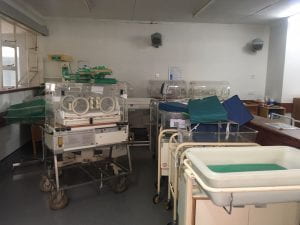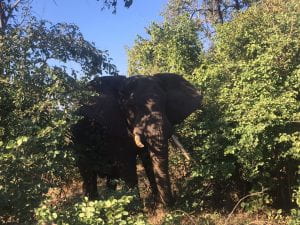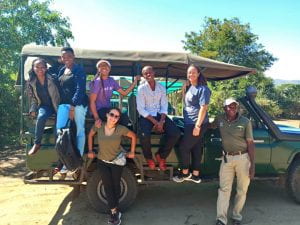Hello everyone!
I cannot believe another week has flown by. We have about 1 month left in Malawi and there’s still so much to do! The first few days of the week consisted of heavy research and compiling of notes. Liseth and I reviewed some of the fundamental principles for interactions with devices and created a list of key aspects to pay attention to while we observed in the wards of Queen Elizabeth Central Hospital. Along with detailing the day-to-day flow of the neonatal and maternity wards, we are paying extra close attention to the user experience while using a particular technology based on the fundamental principles we have learned. We are also taking note of the proximity of equipment and machines, routines of doctors and nurses, communications/interactions between doctors and nurses, how the ward environment shifts throughout the day, and if there are any improvised solutions utilized by doctors and nurses within the ward.
Our first observational day was spent in the Nursery High Dependency Unit (HDU), where 0 to 6-month-old babies who require less intensive treatment are looked after. We spent the morning shift in this ward, attempting to document all of the activities in as much detail as possible. The ward itself was not very large in size and held about 16 beds all in close proximity to one another. Mothers either sat on low stools next to their baby or on the floor nearby. While we were observing, Pumani bCPAP machines (a Rice 360 technology) and oxygen concentrators were in use, so we got a better understanding of how these devices work to help babies breathe. The ward also had 1 multi-parameter patient monitoring machine that was rotated around in order to check pulse and oxygen saturation of the babies 4 times a day. The most informative information from the day did not come from observations, but from talking to the main clinician for the ward. She told us how efficiently they work even with the limited amount of resources available. It was amazing to hear some of the short-term solutions the ward had utilized in order to get the job done. From using duct tape to seal off the exits of leaky oxygen concentrators to creating a makeshift oxygen splitter from a surgical glove, hearing about the creative equipment improvisations was definitely the most surprising part of the day. The main clinician mentioned how they can really make the most out of every resource here in order to save many lives. In her words, “We do not have much, but we really make do with what we have.”
Our second observational day was spent in the Nursery Intensive Care Unit (NICU) which mostly consisted of patients who were born premature. We observed even more Pumani bCPAP machines in use and even had the opportunity to ask a CPAP nurse some questions about the device. The most glaring observation from this day was how the beds inside radiant warmers were holding 2 babies in 1 bed. At first, Liseth and I thought it was due to the lack of functional oxygen concentrator machines that babies had to be positioned close together. But after speaking to one of the doctors, we learned that the issue is really a shortage of available beds. The clinician described how at times, they must fit up to 4 babies side-by-side together into one radiant warmer, which must pose a serious risk for infections. I plan to investigate into this issue further and determine why incubators (which were available, but not in use) were not being used as an option to place babies.

Although we worked hard, this week also had very fun moments as well. Dr. Leautaud, Karen, and Raj came from Rice 360 in Houston to visit us in Blantyre! We had a great time sharing meals together and discussing interesting highlights of the internship so far. On Sunday, our group ventured out to the Majete Wildlife Reserve in Chikwawa. We took safari rides through the park and got to see elephants, impalas, warthogs, baboons, crocodiles, and hippos in their natural habitat. It was a wonderful opportunity to get so close to animals that I would usually only get to see inside of a zoo. Our tour guide on the trip was very adventurous and funny. He managed to get a herd of elephants to chase after our safari car! One of my favorite moments from the weekend however was stopping on the side of the road on the way back to admire the breathtaking view of mountains bathing in the sunset. We took many pictures together and were amazed by the beauty of the landscape.
This week our group will be travelling to Lilongwe for an engineering design competition. We will be there from Wednesday until Friday, so I’ll post more updates about the event in the next blog. Thanks for reading and I’ll see you next week!

